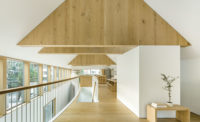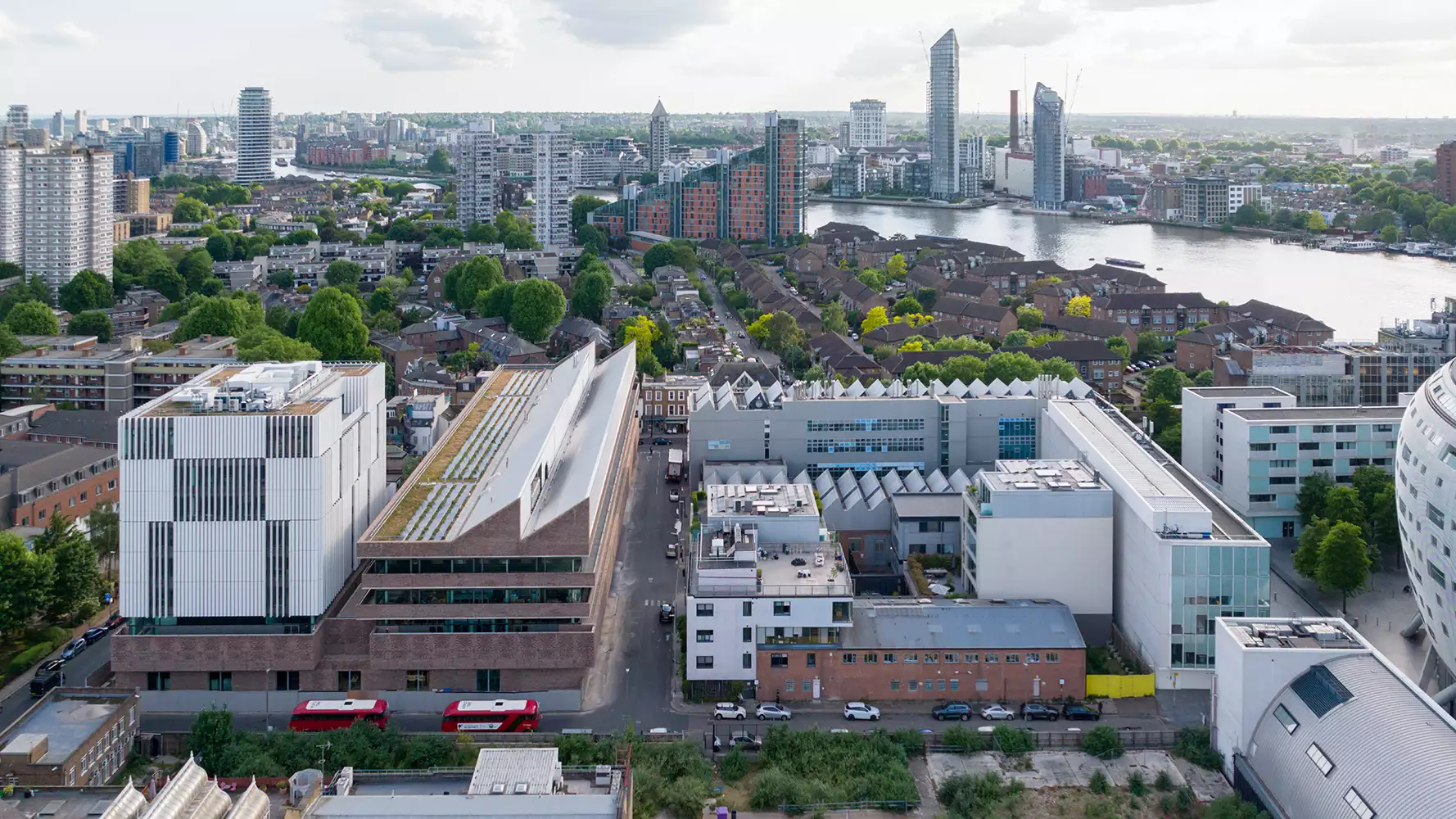Who says you can’t teach an old dog new tricks? Certainly not Kwong Von Glinow (KVG), the Chicago practice tasked with the recent redesign of the 21,400-square-foot John M. Flaxman Library at School of the Art Institute of Chicago (SAIC). Located in the Loop, SAIC occupies parts of 13 buildings. “It is not a typical campus,” explains KVG principal Lap Chi Kwong. “It is a city school, with most of its spaces stacked in buildings.” With the goal of improving the library’s Joan Flasch Artists Book Collection on the fifth floor of the Sharp Building, a Holabird & Roche landmark erected in 1902, the SAIC issued a request for proposals. KVG, a 2022 Design Vanguard, responded with a two-story scheme that revamped the meandering layout of the special collection on the fifth floor and linked it to the circulating main collection upstairs. This brilliant refreshment of tired space didn’t just unify two floors. It also created a learning center that draws students from across artistic disciplines—a rarity on a campus so dispersed.
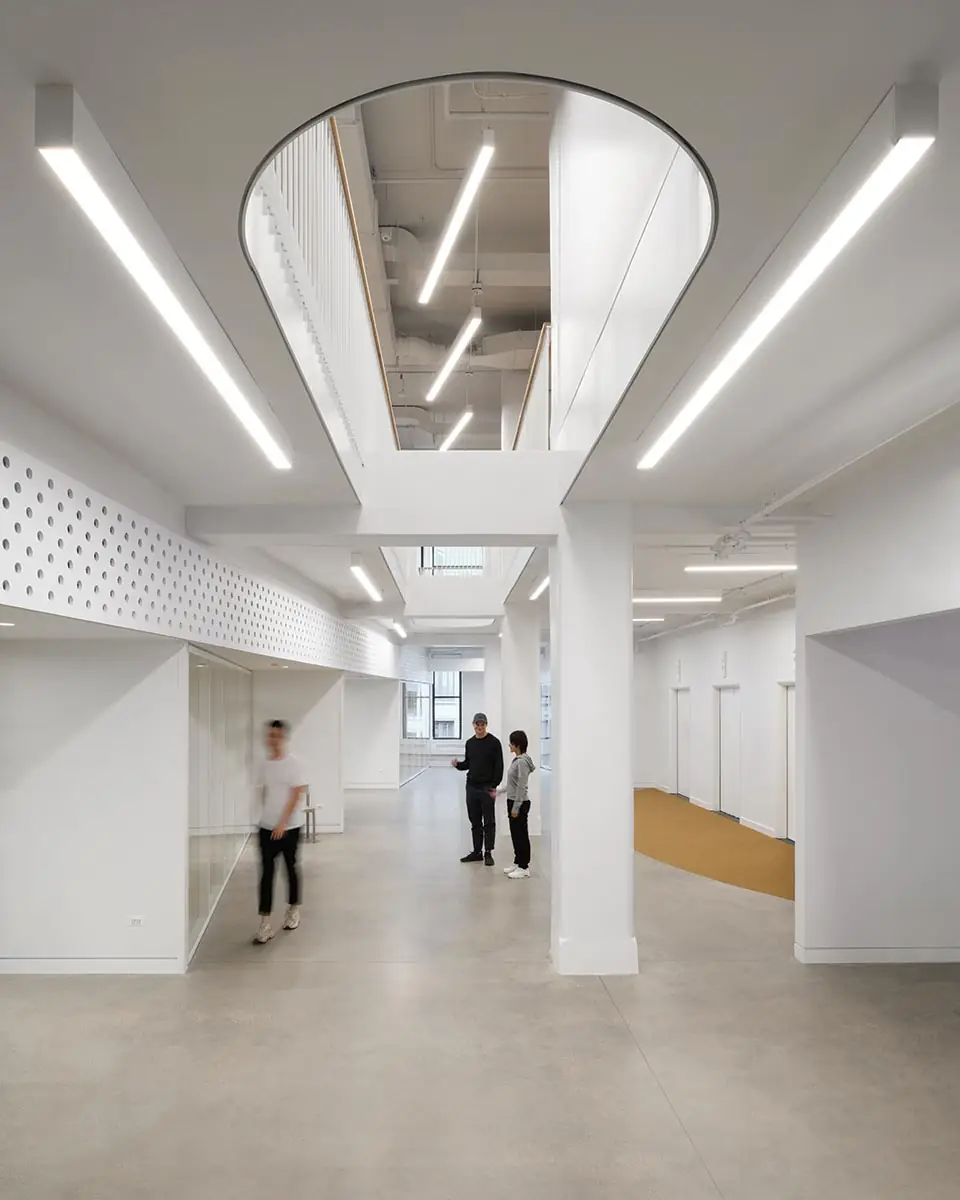
1
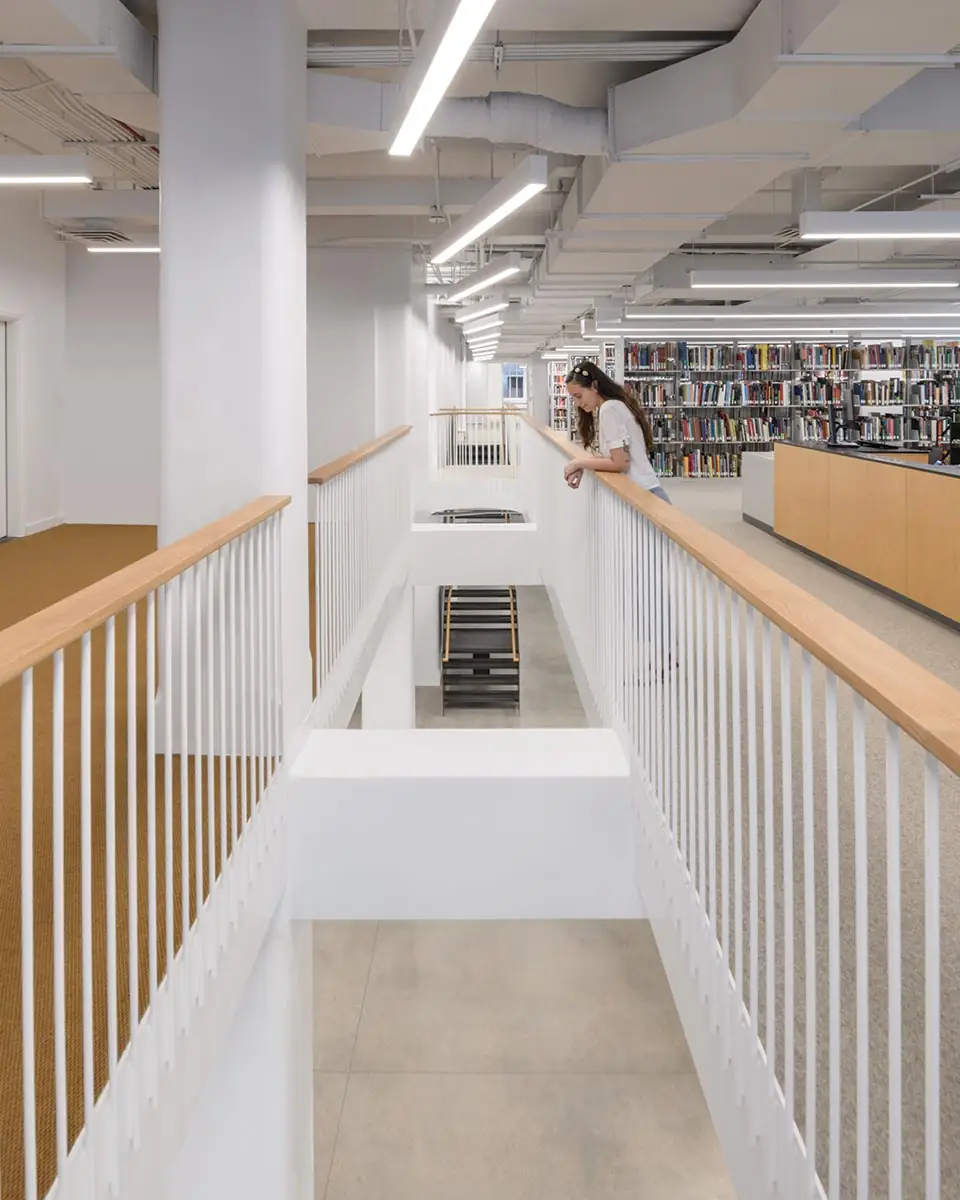
2
The special collection on the fifth floor (1) is now linked to the circulating main collection upstairs (2). Photos © Mikael Olsson, click to enlarge.
These results were realized by adding a sculptural steel stair to connect the two levels internally and removing a small portion of their shared floor slab—a 5-by-100-foot opening allowing open sight lines and free passage of light and sound. “Now we’re one library,” says Brittan Nannenga, head of library special collections and digital services. “Before, we were much more siloed.” Within each floor, the architects used different approaches. While the sixth floor mainly needed reorganization, the fifth floor had to be gutted, since its layout was convoluted and its book storage willy-nilly—not to mention that student access was limited.
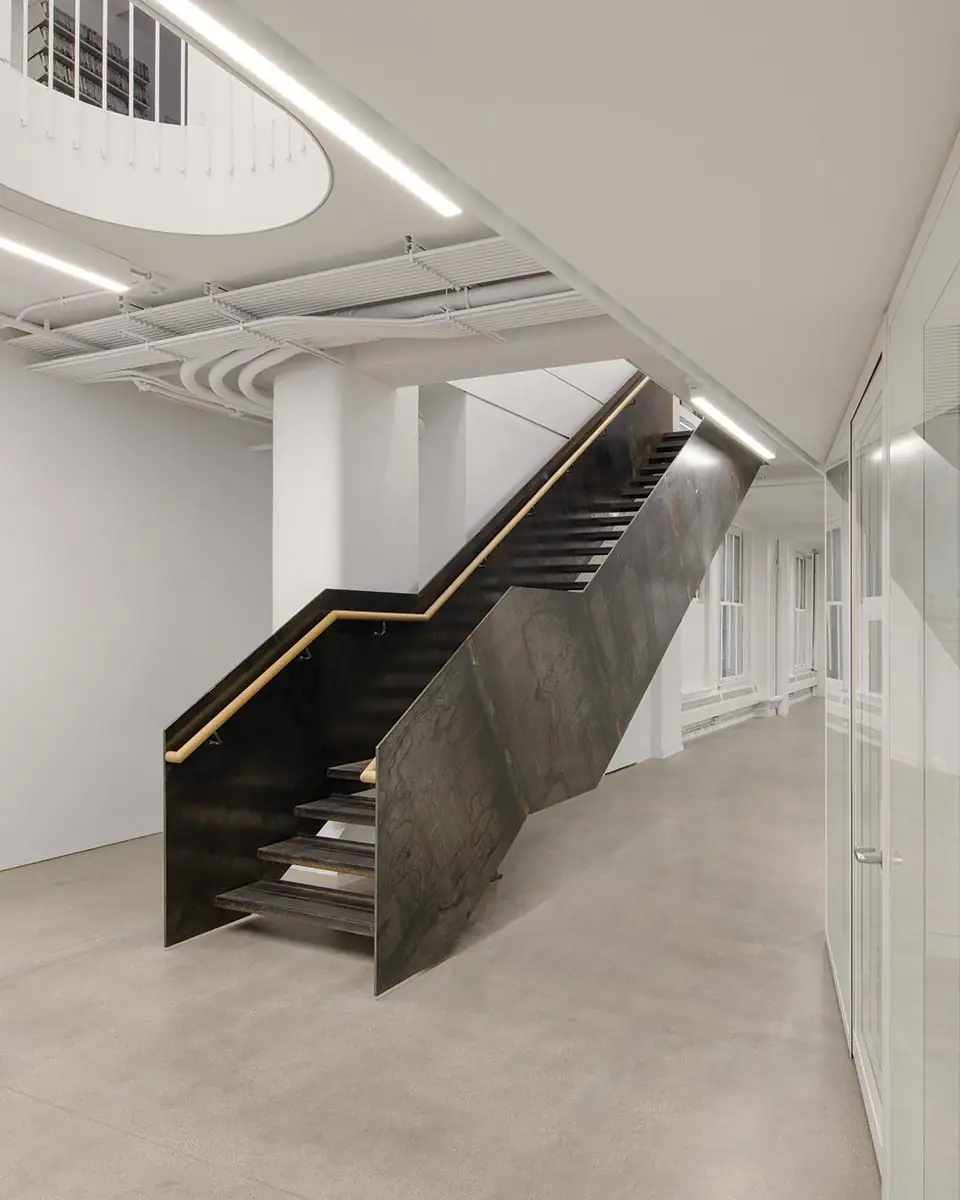
3
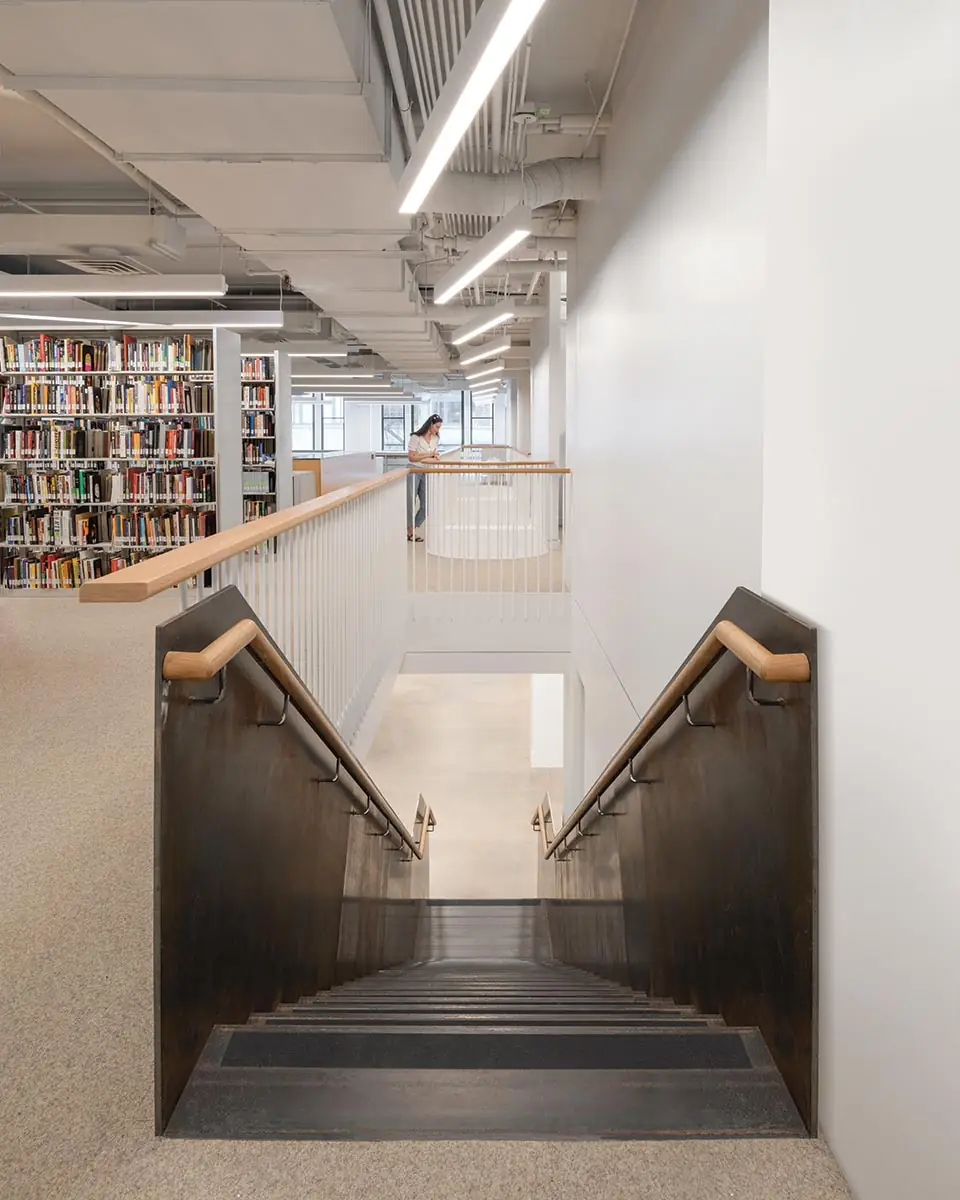
4
A sculptural steel stair was inserted where part of the floor slab was removed (3 & 4). Photos © Mikael Olsson
The fifth floor now begins with the Corridor+, a gently curving 165-foot-long space fanning out from the elevators. It is defined by a full-height glass wall revealing the special collection’s inner workings. From west to east, this includes the librarian hub (open work areas, task rooms, and offices), the special-collection stacks and reading rooms as well as supplemental main-collection stacks. While doors from the Corridor+ access each space, internal doors connecting room to room are for librarians. A conference room and an all-gender restroom are on the north side of the Corridor+. The sixth floor holds most of the main-collection stacks plus librarian work areas, offices, and the circulation desk at the west end. Conference, instructional, and media viewing rooms are across the hall.
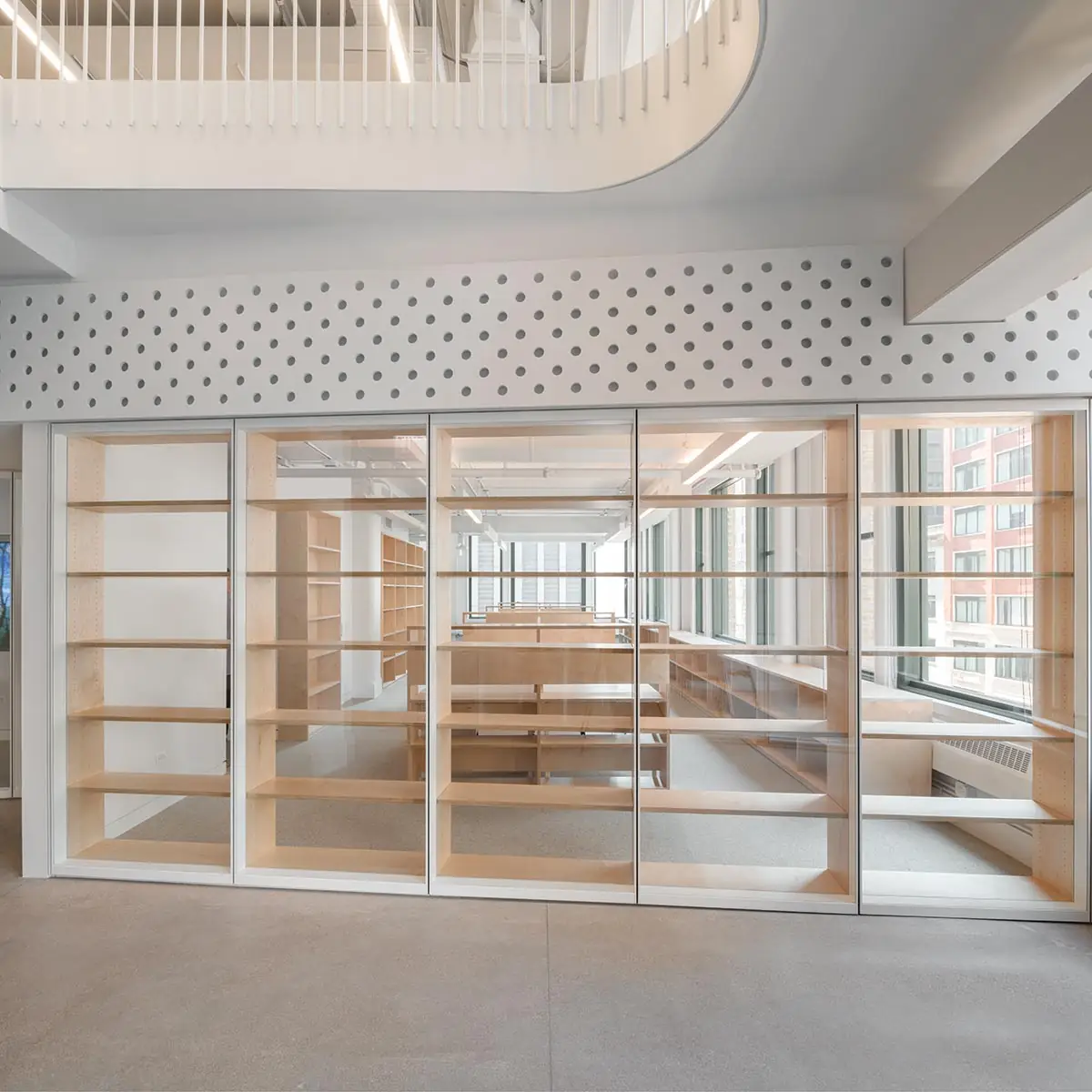
A full-height glass wall lines Corridor+ (above and top of page), bringing daylight in from the large windows. Photo © Mikael Olsson
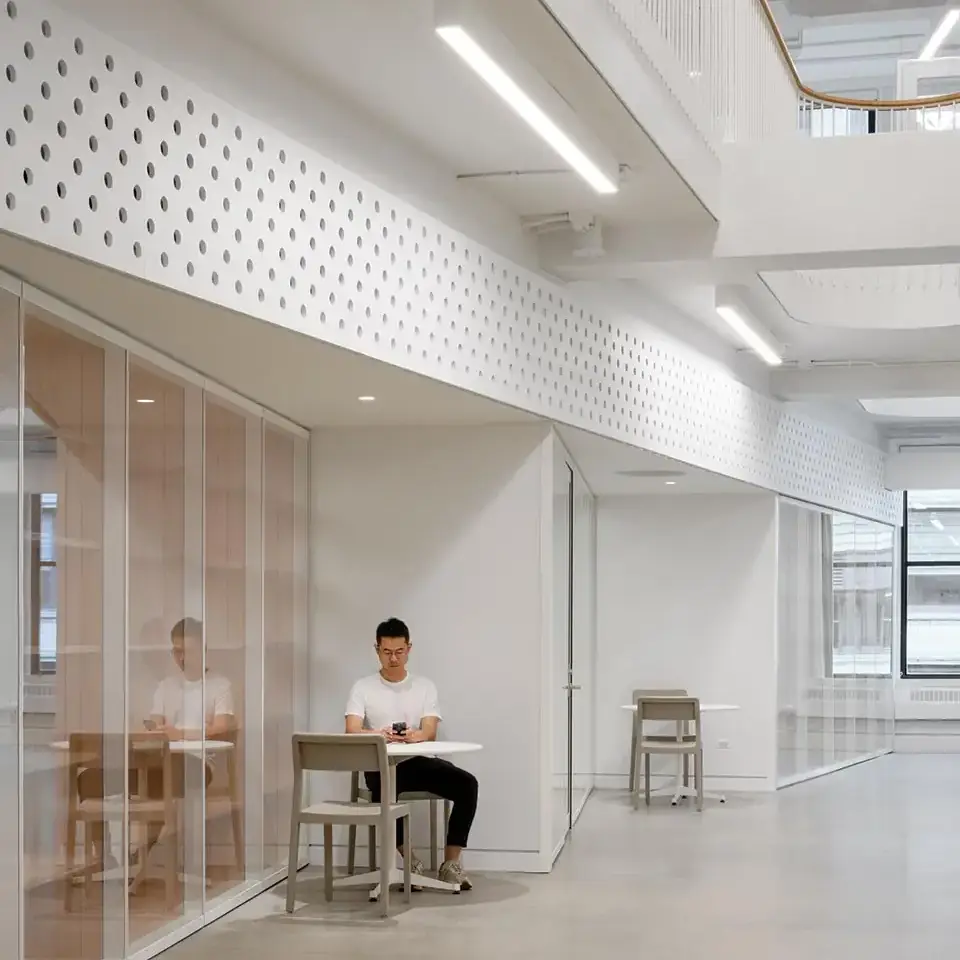
The sawtooth profile of the double-paned glass wall is topped by a polka-dotted transom made of MDO panels. Photo © Mikael Olsson
As its name attests, the Corridor+ provides much more than circulation. A place for events, exhibitions, and even learning, this sweeping space is the heart of KVG’s renovation. It is defined by the sawtooth profile of its double-paned glass wall, which is topped by a curved, polka-dotted transom made of medium density overlay plywood (MDO) panels that conceal mechanical ductwork. The wall’s notched profile yields both display areas with built-in shelving and semi-enclosed study nooks. Thanks to the wall’s overall arched shape, the Corridor+ space tapers at either end but swells in the middle—the perfect place for informal gatherings as well as the flight of steps. Made of welded half-inch steel plate and angles, the staircase is anchored by a beam at the sixth story and a post on the fifth story, where the bottom tread hovers just above the concrete floor.
Choosing steel for the stairs underscores the expression of the building’s existing steel frame. “The whole project was really about revealing the structure of this tall building,” says KVG principal Alison Von Glinow. Clad with historic clay-tile fireproofing, the original columns and beams guided many design decisions. On the fifth floor, the 18-foot column spacing dictated wall placement and bay width, while the 5-foot gap between beams determined the floor opening. No new structure was added—nor was any taken away.
The two levels are also unified by a shared material palette—birch plywood shelving, white or neutral-colored walls, and carpet or concrete flooring—and an abundance of daylight. The SAIC’s standard-issue suspended fixtures illuminate the study areas, but the internal glass walls, a new glass-block panel at the east end of the Corridor+, and existing windows admit daylight from all four directions.
While surface treatments and daylight brighten the atmosphere, the architects could not enlarge the space. But careful consideration of student use and functional efficiency enabled a place that now works better, seems bigger, and even has room to grow.
Click drawings to enlarge
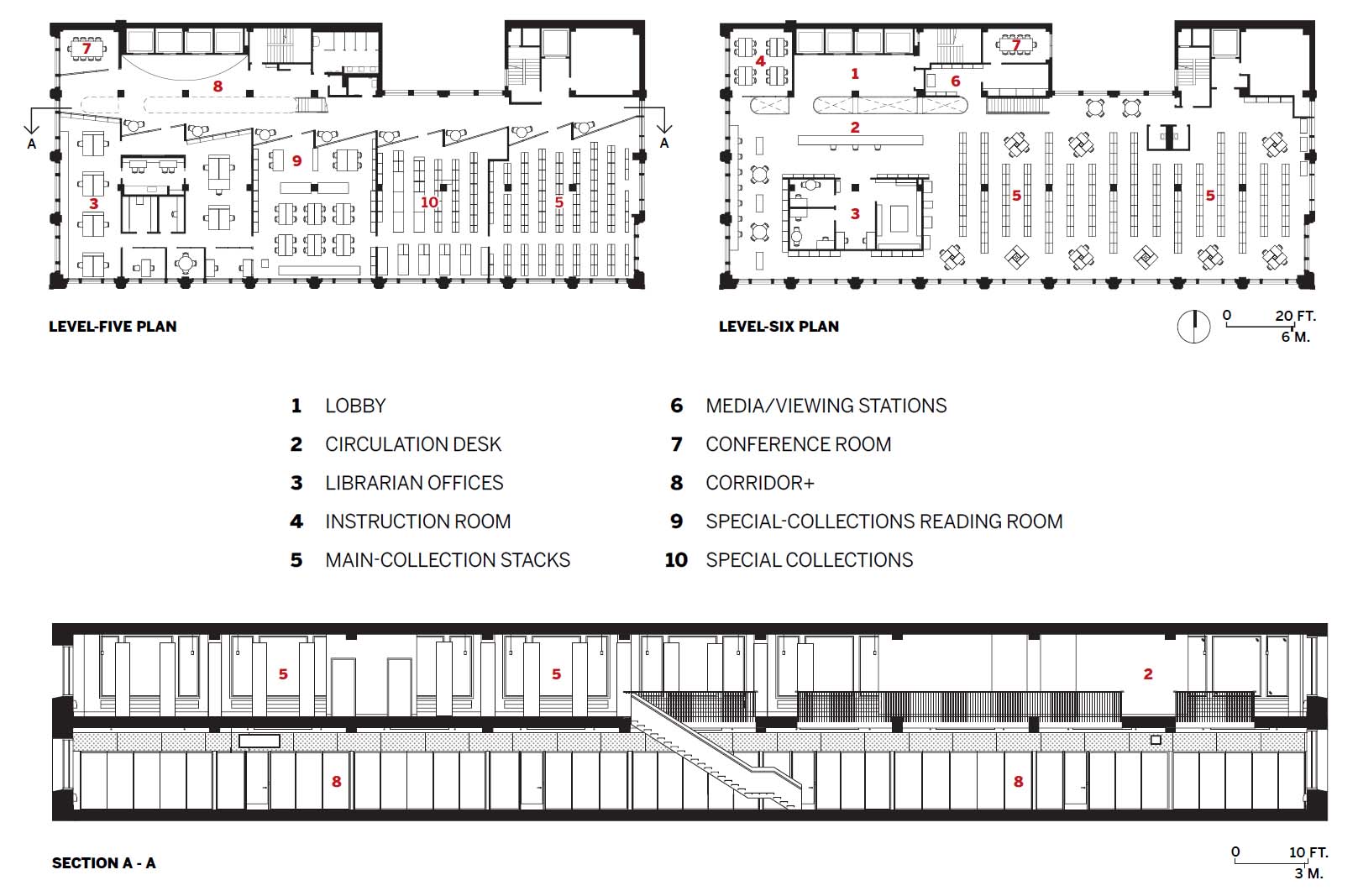
Credits
Architect:
Kwong Von Glinow — Lap Chi Kwong, Alison Von Glinow, partners in charge; Nathan Geller, project architect; Tianjiao Wang, Jonah Laduca, Oana Giuglea, Jiachen Wang, Steven Huang, design team
Engineers:
Bob Magruder (structural); Advanced Consulting Group International (m/e/p/fp); Threshold Acoustics (acoustical)
Consultants:
MAPS (permit expeditor)
General Contractor:
Mortenson
Client:
School of the Art Institute of Chicago
Size:
21,400 square feet
Cost:
Withheld
Completion Date:
September 2023
Sources
Cabinetwork:
Demeter Millwork
Acoustical Ceilings:
USG, Tectum
Interior Finishes:
Chemetal (paneling); Daltile (solid surfacing); Naturali Stone (tile); Matter Surfaces, Flor (carpet); Infinium (glazing); Scranton Products (partitions); Great Lake Stair & Steel (custom metal)


